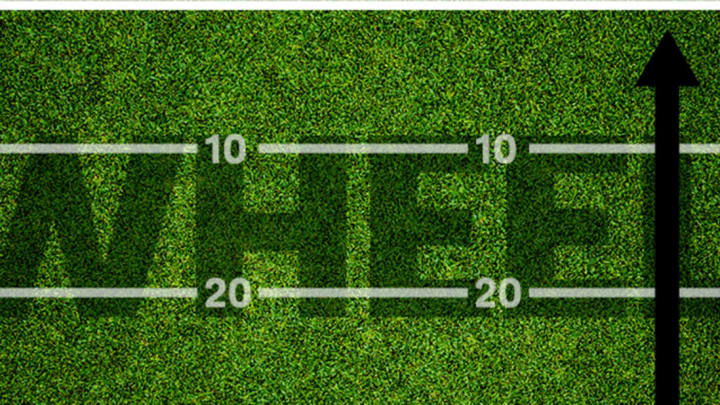10 Football Passing Routes Explained

When you hear a former quarterback on a football broadcast drop seemingly random terms like out, wheel, and dig, it can get a little confusing. You’re just getting an unexpected dose of knowledge about receivers’ passing routes. There are all kinds of rules about who lines up where and why, but we’ll stick to the basics with a description of some of the most common routes and what they look like on the field.
1. WHAT IS AN OUT ROUTE?
The ability to throw this route makes scouts drool over a quarterback’s arm strength and accuracy. The receiver runs about 10 yards, cuts at a 90-degree angle and heads out to the sideline, with the ball (hopefully) in flight and ready to land in his hands.
2. WHAT IS A DIG ROUTE?
Also known as the “in” or the “square in,” the dig is sort of like the out, but the receiver cuts to the middle of field rather than the sideline. The dig is a great route for big, strong receivers.
3. WHAT IS A POST ROUTE?
The receiver, hopefully matched up against a single, scrambling safety, runs 15 to 20 yards downfield, then angles toward the goal post at a 45-degree angle. When everything goes according to plan, the result is a long, beautiful pass play that looks great on highlights and makes everyone happy. (Everyone on offense, anyway.)
4. WHAT IS A CORNER ROUTE?
Like the post route but the receiver cuts his angle out to the pylon at the corner of the end zone. Basically, it’s a post, but with the break outside instead of inside, and the receiver aims for the squishy orange rectangle, not the giant H.
5. WHAT IS A WHEEL ROUTE?
A cool route often used for running backs, the receiver heads out of the backfield to the sideline, then breaks up the field with nothing but green and glory in front of him.
6. WHAT IS A CURL ROUTE?
Sometimes called a hitch or a hook, depending on the length of the route—a hitch is around five to eight yards, the hook eight to 12—the receiver runs straight out, stops, and curls back in toward the quarterback. It's like walking in a hurry down the street, stopping abruptly, and turning around when you think you see a wadded-up dollar bill on the sidewalk.
7. WHAT IS A GO ROUTE?
This route is for speedy guys only. Run straight down the field, as fast as you can, as deep as you can. The ultimate sandlot play, anyone who has ever played football on a field or on the street in front of their house has tried to score a touchdown this way.
8. WHAT IS A SLANT ROUTE?
The slant is a staple in West Coast offenses, but there are no geographical restrictions on where you run this play. The receiver runs five to seven yards and quickly cuts at a 45-degree angle across the middle of the field. It’s a baby version of the post that needs a quick read, a quick throw, and frustration for fans watching their team get beat by this play over and over and over. Come on, guard him!
9. WHAT IS A FLAT ROUTE?
That little area on either side of the line of scrimmage? It’s called the flat. The running back (it’s almost always a back) hightails it to this spot with his head on a swivel and hauls it in. This route is also called a flare.
10. WHAT IS A COMEBACK ROUTE?
This route is probably a little rough on the knees. The receiver, often the super-fast stud on the outside, runs hard downfield, pumps the brakes, and then turns sharply back to the quarterback. If he’s lucky, the QB lets the ball go before he even makes that move, and the ball is in the air as he turns around.
All images courtesy of Chloe Effron.